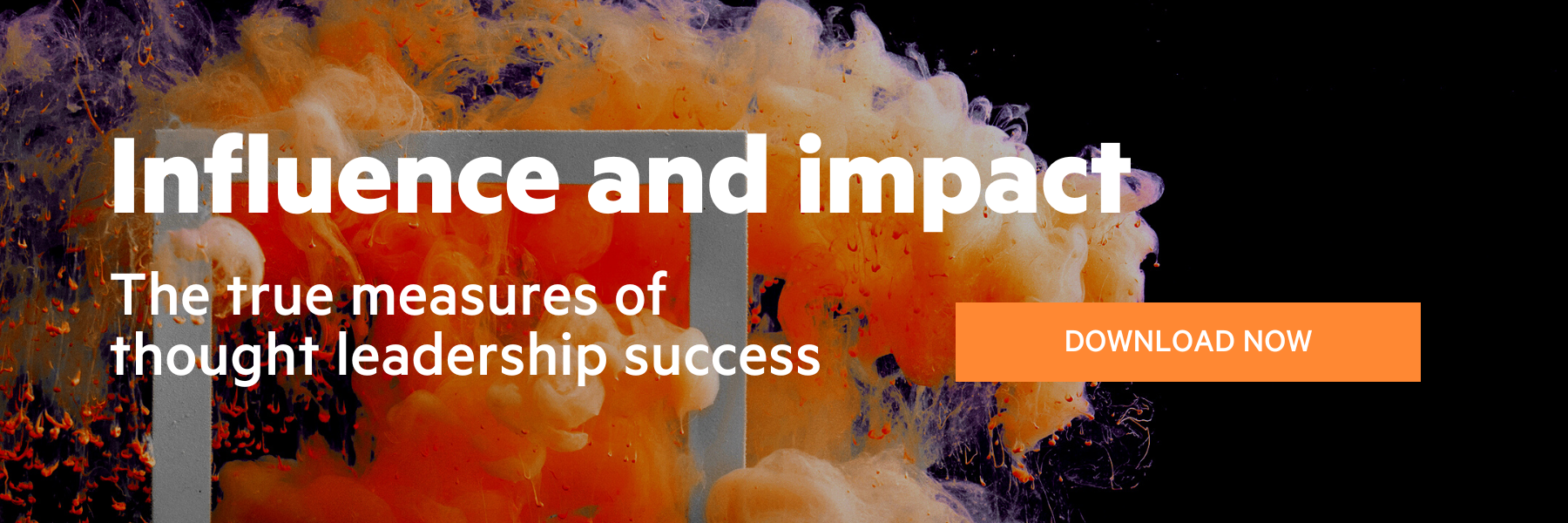B2B content copywriting: What great ad copy can teach us
Emily Taylor Gregory
Advertising copywriters know a thing or two about influencing an audience. One of the most successful was Victor Schwab, who was a leading light in the industry for more than 40 years. We explore what Schwab’s prescription for ad copy means for B2B content copywriting today.
In his book How to Write a Good Advertisement, Schwab says that there are five fundamentals to writing good copy:
- Get attention
- Show people an advantage
- Prove it
- Persuade people to grasp the advantage
- Ask for action
Schwab’s speciality was mail-order adverts, and he was writing them in the first half of the 20th century, but his simple prescription still rings true today.
In our new ebook, Influence and impact, Schwab’s five fundamentals form just part of our guidance for marketers on how to create influential content. But in this post we introduce his five stages and consider what they mean for B2B content copywriting.
Stage 1: Get attention

Do not underestimate the fierce competition you face in getting attention. Nobody in the world (except you) is waiting for your advertisement to appear. Everybody in the world (except you) would much rather read the news, comics, stories, articles, editorials or even the obituaries.
Victor Schwab
Getting attention from a senior B2B audience has become a lot harder than it was in the 1940s when Schwab was at his peak. Back then, media was simple. Today, audiences are bombarded with content and advertising across multiple channels, and it is easier than ever for them to shut out unwanted messages and avoid your attempts to influence them.
So how do you get the audience’s attention in the first place? To stand a chance, your content needs four vital features, which we call the SURE framework. You need to make it simple, urgent, relevant and eye-opening.
Download the ebook here for more on how our SURE framework and how to apply it.
Stage 2: Show people an advantage

Getting your audience’s attention is just the first stage of influencing them. To make them change their behaviour or think differently about your brand, you have to show them the advantage. This means demonstrating how the change you want them to make is the right decision for them.
First, know your audience
It starts with an audience-first, outside-in approach to content development. Too many companies make the mistake of projecting their worldview on to the outside world on the assumption that the audience will be interested, instead of thinking about what is really on their minds. In other words, they default to an inside-out approach.
Then hold their interest
Once you know your audience and what is on their minds, you can start to show them the advantage. This means you will have to sustain their interest, because this message will be more nuanced than the headlines and messages that grabbed their attention in the first place.
Storytelling is a vital tool for sustaining attention. Our brains are hardwired for narrative, so stories are one of the most powerful ways to engage an audience and show an advantage.
Stage 3: Prove it

Stories are valuable, but the thing about stories is that many are not true. To influence your audience and make them willing to take steps into unfamiliar territory, you need to be able to prove your claims.
This is where independent research comes in. Surveys of groups that represent your audience can give you evidence to support your claims and help to strengthen influence.
Here are just a couple of ways to prove your point:
- The audience’s peers are already doing it
Research showing that peers are already under way with a proposed change instils a sense of urgency in others to do the same. It triggers loss aversion – an important concept in behavioural economics whereby losses loom larger in people’s minds than gains.
- The costs of inaction are too great
Any change creates risk, and there are powerful feelings of inertia and biases, such as the sunk cost fallacy, that can deter managers from changing course. But if you can demonstrate that the costs of inaction are too great, you can influence audiences to make significant changes that they might otherwise perceive as too risky.
You’ll find more detail on these techniques and other ways to demonstrate your point in our ebook.
Stage 4: Persuade people

When it comes to persuading people to grasp the advantage, we turn to professor of psychology and best-selling author Robert Cialdini who can help us to understand the psychology behind influence.
In his book Influence, he outlines six principles of persuasion:
- Reciprocity
- Consistency
- Social proof
- Liking
- Authority
- Scarcity
Over the years, these six principles have become the mainstays for marketers everywhere and more recently the area of behavioural economics has exploded as companies seek to connect with their audiences on a more emotional level.
What is striking about Cialdini’s six principles is how easily they can be applied to B2B content copywriting. In the ebook we demonstrate why these six principles are so important.
Stage 5: Ask for action

The goal of any piece of brand communication is to prompt an action on the part of the audience. But in the complex world of B2B, this is unlikely to be an immediate purchase – as it may have been for Victor Schwab’s mail-order adverts.
With long sales cycles, large buyer groups and expensive price tags, B2B purchasing decisions are highly considered and may take many months.
Your content portfolio has to take into account these complexities and provide opportunities for your various audience groups to think differently and/or act differently at each stage of the journey.
Speak to the team
We’ll help you to navigate and overcome any challenges you currently face and learn how to get more out of your content.
Book a meeting
About the author: Emily Taylor Gregory
Emily is our marketing director, responsible for the brand, marketing and communications strategies for FT Longitude. Emily leads our content and events programmes, as well as our speaking engagements and PR activity, working closely with our editorial and research teams to develop and promote insight and best practice at the cutting edge of thought leadership.
Before joining FT Longitude, Emily spent 14 years working in various marketing roles in the publishing and technology sectors.
 |
Tel:
+44 (0)20 7873 4770
|
Tel:
+44 (0)20 7873 4770



